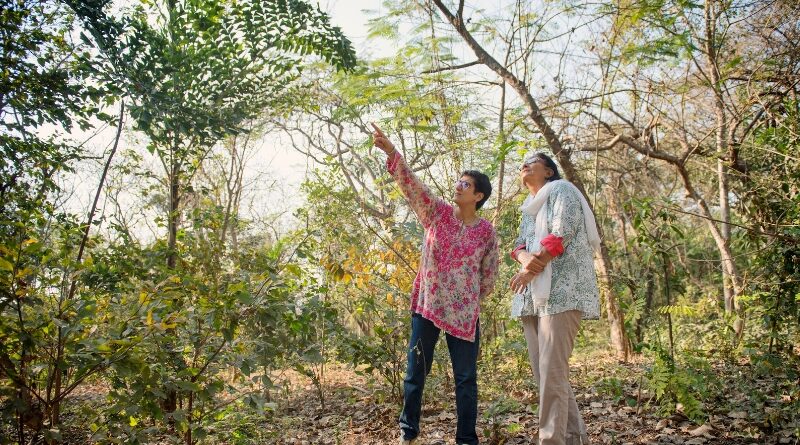Reviving the Forest of Doongerwadi
In the heart of Mumbai lies a verdant undeveloped green oasis of about 55 acres amongst an urban sprawl on the eastern edge of Malabar Hill. The area is called Doongerwadi, which translates to ‘orchard on the hill’ and contains within it The Towers of Silence, which serve as the final resting place of the Parsi community.
Since 2015, the Centre for Environmental Research and Education, has partnered with the Bombay Parsi Panchayat (BPP) to restore and revive the holy land of Doongerwadi.
Doongerwadi faces many challenges…
- Each monsoon seasons causes soil erosion which leads to many tall trees to collapse.
- Over-growth and rapid proliferation exotic invasive species such as of gliricidia plants, result in no new saplings or natural growth and regeneration of the forest.
- Excessive fungal growth and pest attacks occur due to a closed canopy due to invasive creepers and climbers.
As part of the restoration, regular plantation and maintenance work carried out:
- Large Indian native plant tree species, with 3-4 year old saplings, with a minimum height of 4-6 feet are planted. More than 50+ species of Indian flowering and fruiting forest species such as Jarul, Bahava, Sawar, Saptparni, Jamun, Sandalwood, Ber, Bael, Phanas, Bibba, Palas, Raktchandan, Chandan, Saag, Shisam etc have been planted.
- The termite infestation load is reduced when required.
- Regular de-weeding and removal of invasive creepers and climbers to allow sunlight to penetrate the under storey of the forest.
- Removal of rotten trees that have collapsed during the monsoon season.
- A 3 H.P. water pump along with a technically designed drip irrigation system was fitted at the site.
Doongerwadi is the only green lung of South and Central Mumbai. The dense plantation of trees provides immeasurable ecological services to the growing megapolis of Mumbai. The benefits of Doongerwadi include:
- A major carbon sink for the city and hence decreasing the carbon footprint of Mumbai.
- Absorbs air pollution and thus improvement in air quality
- Green cover prevents the spread of diseases through decreased particulate matter.
- An increase in the local, indigenous biodiversity as these native and fruit bearing trees serve as food sources and habitats for a wide variety of fauna.
- A biosphere for the conservation and preservation of native tree species since Doongerwadi serves as a living herbarium.
To date,
7092 native tree saplings have been planted
52 unique plant species
1,560 metric tonnes of CO2 sequestered


